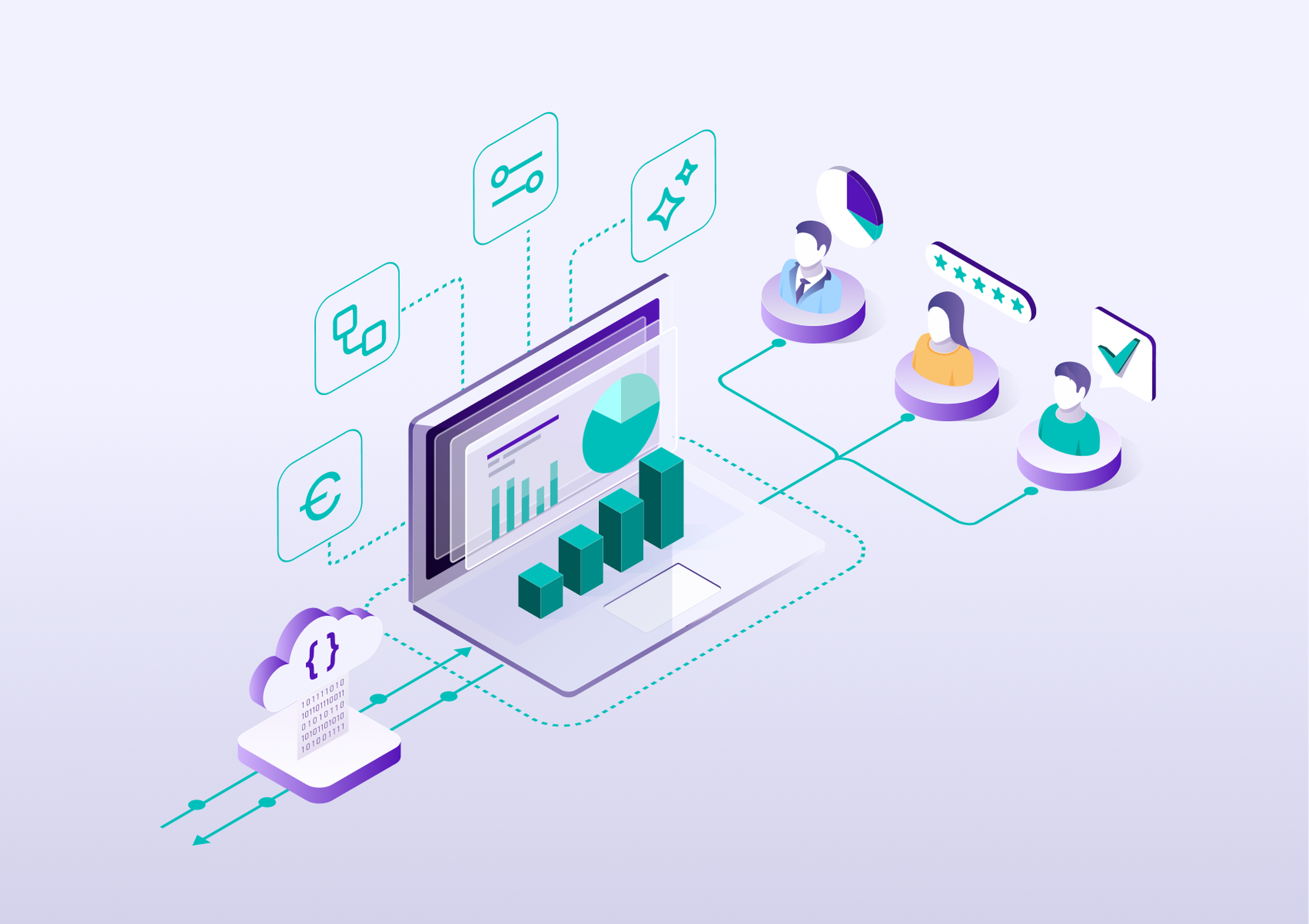Managing external providers is a complex task. To ensure the operational success of professional services procurement, companies need a structured approach to manage their supplier relationships. To guarantee both legal and strategic compliance while optimizing the performance of their approved vendor panel, one tool has emerged as the ideal solution: the Vendor Management System (VMS).
A VMS is a software that helps companies manage their approved vendors, from onboarding to contract management, performance evaluation, and compliance tracking. It streamlines and simplifies the request for proposals (RFP) process, ensures transparency, and helps optimize costs. But how does it work, and why is it now indispensable?
In this article, we’ll explore what a Vendor Management System is, its key benefits, essential features, and best practices for successful implementation.
What is a Vendor Management System (VMS)?
A Vendor Management System (VMS) is a SaaS platform dedicated to the complete and international management of external service providers, whether freelancers, consulting firms, or IT services companies.
A VMS supports the procurement and management of services from approved vendors, meaning partners who have already been selected and validated by the company through framework agreements. This tool covers the entire lifecycle of professional services, from supplier sourcing to invoicing and payment, the full Source to Pay (S2P) cycle, ensuring rigorous and transparent tracking of outsourced engagements.
All the features available in a VMS help save time for operational and procurement teams, and reduce costs, notably through better supplier competition or even dynamic vendor onboarding.
Stakeholders involved in a VMS: a collaborative approach
The VMS is designed for multiple stakeholders. Here’s a breakdown of their roles, responsibilities, and benefits:
Procurement teams
Procurement builds the global ecosystem, negotiates contracts, sets budget and performance objectives, and ensures that teams have access to all necessary resources.
The VMS provides significant time savings through automation of repetitive tasks and improved risk management. It integrates framework agreements into the platform, strengthens cost control, and facilitates management of the approved supplier panel.
Operational teams
Operational teams are on the ground: they define requirements and select experts in collaboration with vendors.
Thanks to the controlled autonomy offered by the VMS, they can choose the best talent while respecting procurement guidelines. They can also track performance and adjust plans accordingly.
Vendors
External service providers are brought in to contribute to specific projects based on their expertise.
The VMS provides them with a smooth and professional experience: access to RFPs, project tracking, timesheet submission, invoicing, and payment follow-up, all in one place.
Support functions
Finance, Legal, and HR ensure process compliance, reliability, and security. They rely on the VMS as a precise management tool, with clear workflows, detailed budget tracking, and real-time KPIs.
Key features of a Vendor Management System (VMS)
A Vendor Management System typically includes the following functionalities:
Request for proposals: Simple RFP creation with customized distribution options (for example, cascading by supplier tiers)
Supplier onboarding: Standardized registration, qualification and compliance checks, framework contract details directly integrated into the platform
Contract management: Centralized storage, tracking, and automation of supplier contracts
Performance tracking: Monitoring of performance indicators (KPIs), dashboards, and compliance with Service Level Agreements (SLAs)
Risk management: Evaluation of supplier risk (financial, operational, legal) and regulatory compliance
Procurement process automation: Streamlined ordering, approvals, and communication with vendors
Invoice and payment processing: Ensures accurate invoicing and minimizes payment discrepancies
What are the benefits of a VMS?
Implementing a Vendor Management System deeply transforms how professional services are managed. By centralizing processes and digitalizing the entire Source to Pay cycle, the VMS brings tangible benefits to procurement departments, operational teams, and all supporting functions.
First, a VMS helps save considerable time. By automating repetitive tasks such as RFP publication, project validation, or invoicing, teams can focus on higher-value activities.
It also improves cost control. By integrating rate cards and framework agreements directly into the platform, it ensures fair and structured competition. Purchases are made in compliance with internal policies while optimizing engaged budgets.
Another key advantage: compliance. A VMS helps standardize processes across the entire organization, reducing legal risks and ensuring complete traceability of interactions with service providers.
Operationally, the VMS facilitates collaboration between stakeholders. Thanks to a shared interface, each actor, buyer, project lead, finance team, or vendor, has access to reliable, up-to-date, centralized information. This transparency streamlines communication and improves vendor relationships.
Finally, the VMS is a strategic management tool. It provides full visibility over spending, ongoing projects, supplier performance, and timelines. These insights, available through customizable dashboards, enable decision-makers to make informed choices and continuously monitor their objectives.
A better way to manage external providers
The VMS is changing the way companies manage their external providers. It enables a more efficient, agile, and market-aligned vision.
By combining technology, user-friendliness, and strategic value, the Vendor Management System is now an essential solution for organizations looking to take control of their professional services and optimize their external procurement.
Eleven VMS can help turn a complex process into a strategic advantage.
Contact our experts for a personalized demonstration of our platform.



